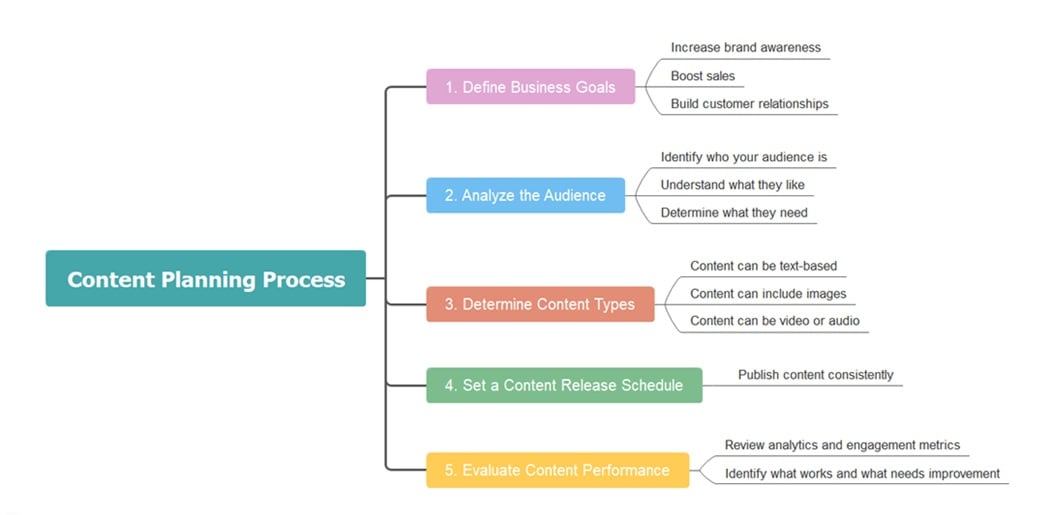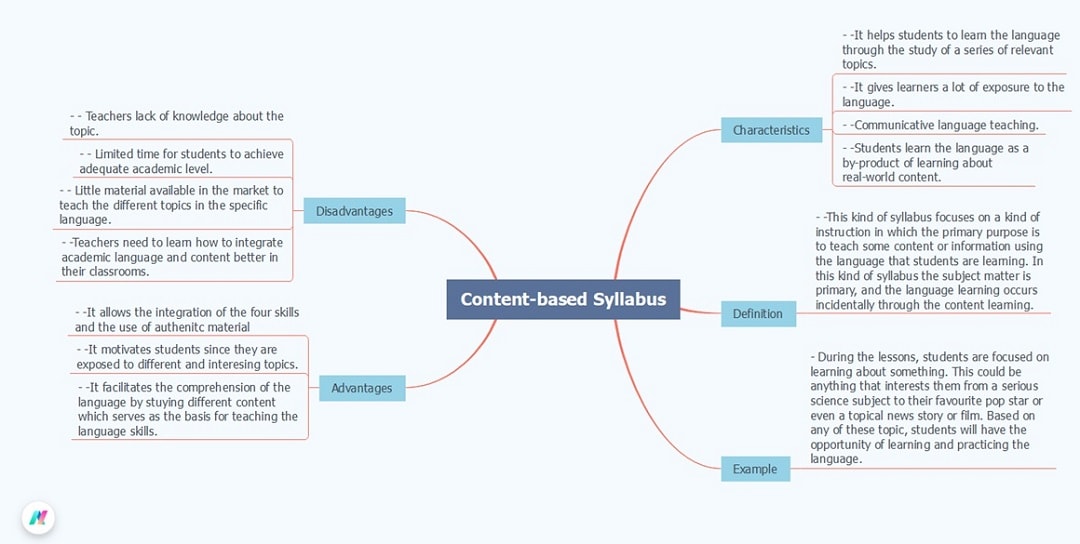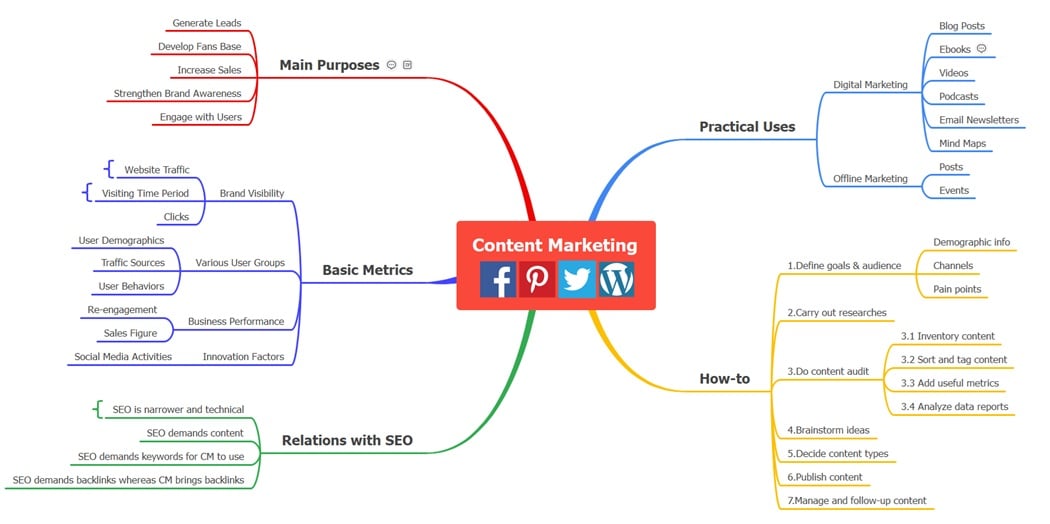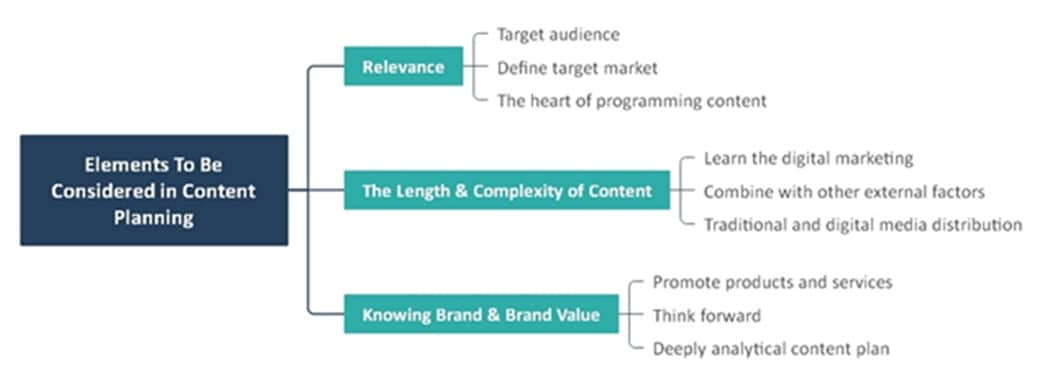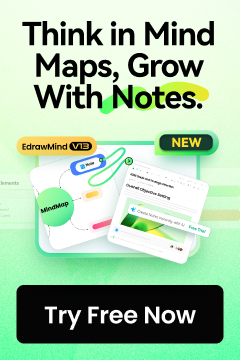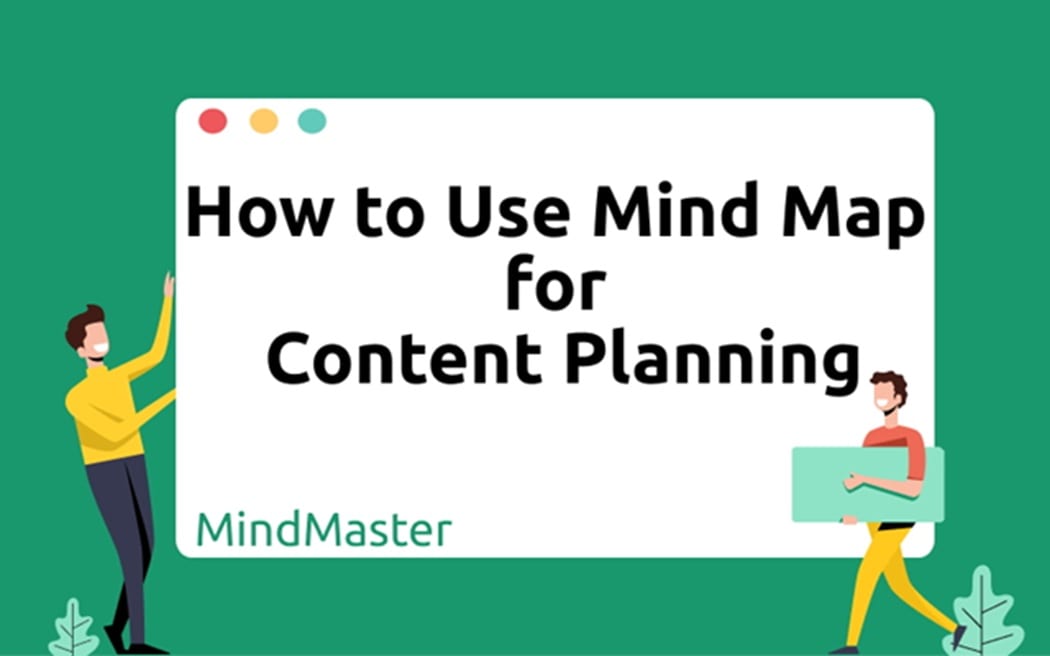
Content planning helps create an effective form of content production for your business. This article will dive into the various content planning elements and use a mind map for content planning.
In this article
What Is Content Planning?
A content plan includes all the marketing assets and data-gathering functions necessary to achieve the objectives set out in your content strategy. A content strategy covers everything from SEO analysis and communication mapping to blogging and white paper writing.
About 70% of marketers lack a consistent or coordinated marketing plan, and only 29% of leading advertisers reuse and repurpose content marketing systemically.
It can be because the process of creating a project can be daunting. Marketers must analyze the location of their marketing efforts and define what they want to achieve in the future.
Content marketers realize that careful planning will make a difference. Having a random, unmaintained blog or a popular SEO-optimized website with many readers can be the difference. In the details, that difference is.
Content Strategy VS Content Planning
The main difference between content planning and content strategy is that content strategy lays the groundwork for what you need to include in your content plan, followed by content production.
These are fundamental steps that lead to content publishing and distribution of the marketing approach to content. The content plan consists of the building blocks (assets, reports, outreach) selected based on the objectives set out in your content strategy.
The Benefits of Content Planning
There are several benefits to content planning, especially for marketers or writers. Through content planning, they could schedule or arrange content flexibly.
- Having quality content promoted across relevant social media channels will get your brand in front of those looking for a solution to their problem.
- If you continuously deliver actionable content to your audience, they'll turn to your business as a solution to solve their problems
- Small enterprises face the challenge of putting their brand before their target audience. Creating content that is continuously discovered when someone is looking for an answer can positively impact your brand reputation and build it.
Mind Map Examples for Content Planning
The following templates from Wondershare EdrawMind’s mind map Gallery show how to organize topics, workflows, and goals. Each example helps streamline content planning, improve structure, and make team collaboration faster and clearer.
Content Planning Process
Contents of Strategic Planning
Strategic planning begins with defining the company's vision and mission to set a clear direction for future growth. It strengthens market position, clarifies company values, and inspires employees to achieve shared goals.
The process also includes setting short- and long-term objectives such as increasing market share, improving revenue, and ensuring financial stability. These goals guide decision-making and help measure overall performance.
Strategic planning continues with analyzing internal and external factors, assessing resources, and forming strategies for marketing, operations, human resources, and finance to improve efficiency, customer satisfaction, and long-term profitability.
Content-Based Syllabus
A content-based syllabus centers on learning a language through real topics and themes. Students gain exposure to the language while studying meaningful content, such as science, culture, or current events, promoting natural and practical language use.
This approach integrates content and communication. Learners focus on understanding information while language development happens as a by-product.
For example, lessons can involve studying a favorite celebrity or film, giving students the chance to practice vocabulary and grammar within real-world contexts.
Its benefits include skill integration, authentic materials, and motivation through engaging topics. However, it requires well-prepared teachers, enough time, and strong content-language balance.
Content Planning for Marketing
Content marketing is a strategy that uses valuable materials like blog posts, videos, mind maps, and newsletters to attract and engage audiences. It works both online and offline to build trust and promote brand awareness.
The process begins with defining goals and audiences, followed by research and content audits to measure performance. Marketers brainstorm creative ideas, select suitable formats, and publish consistent content. They also manage follow-ups to ensure lasting engagement and effectiveness.
Content marketing supports SEO by driving backlinks, improving visibility, and boosting search performance. Key metrics include traffic, engagement, user behavior, and business growth through loyal communities.
Blueprint of Content Planning
This mind map shows the full structure of an effective content planning process. It starts by defining clear business goals, analyzing target audiences, and selecting the right content types for their needs.
It also highlights the value of a detailed content calendar to organize publishing schedules, assign roles, and balance seasonal or trending topics. Each branch connects strategy, timing, and creativity to maintain consistent and engaging campaigns.
The mind map concludes with tracking and improvement, where teams measure engagement, evaluate performance, and refine strategies to strengthen future content efforts and achieve long-term marketing success.
Elements To Be Considered During Content Planning
A few things to keep in mind during content planning
Relevance
Relevance is at the heart of programming content. It's essential to have an excellent idea of who the target audience is. Define your target market or the person who would most benefit from your content.
Then, through research, validate hypotheses about them and create a clearer picture of what this community wants to learn and what topics it wants to build upon.
The Length and Complexity of Content
It would help if you thought of how a piece can be repurposed to suit text, posts, video, podcasts, photographs from social media, white papers, or some other medium.
You will need to learn the digital marketing strategies and platforms to decide the right ways and times to distribute the digital content.
Your choice of delivery methods and timing will depend a lot on what's the best way to reach your target audience.
Consider daily, weekly, monthly, or annual trends, seasons, and holiday observances, or maximum intake periods. These considerations can help to define when to put out some pieces of content at their best.
Traditional and digital media distribution channels are available in vast numbers. It involves making choices about producing content and when to relate it to the target market.
Knowing Brand & Brand Value
Promoting your services and products will give you greater confidence and differentiate you from your rivals.
The key to creating an excellent plan for content is to think forward. However, that requires putting aside time to work out what's best for your audience and when.
Although this process can get deeply analytical with a solid content plan, you can continuously schedule content in a more strategic and detailed way.
Explore More Mind Maps or Make One for Free Now
EdrawMind is the easiest tool for creating a mind map. Just a few clicks, and your mind map is done!
Using a mind map for content planning could be time-saving and productive. Below are some of the things you can do for content planning:
-
Content Workflow
It is vital to create a flow of work while creating content, as it helps in allocating tasks and defining the various channels for content creation. A workflow helps in optimizing the results of the content planning process.
-
Content Calendar
A content calendar provides structure to the content planning process. It helps in establishing an overview of the content plan and provides a bird's-eye perspective.
It ensures that everyone is on the same page, and there is no delay in content creation.
-
Team Training
All members of the team need to be on the same page. During the content planning process, every member must understand and accept their role. A short briefing or training session can help the team stay on track.
-
Content Distribution
It is also essential to define the different channels for content distribution and create content, whether the content is for a digital medium, print medium, or audiovisual medium.
Determining the tracks and the specific channels for specific types of content is essential.
-
Quality Assurance Planning
A designated team for quality assurance planning is essential. It will not only understand the flow of content but also ensure that the delivery and execution are timely and of good quality.
The quality assurance planning team should provide feedback to the content team to ensure efficient productivity.
In the Gallery, you’ll find templates for marketing strategy, content calendars, audience research, and social media campaigns.
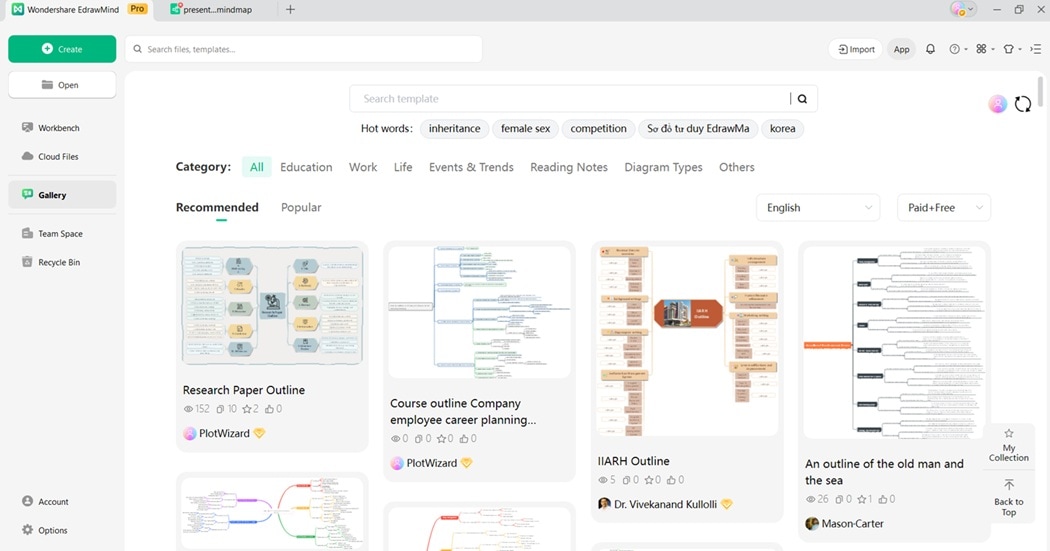
Choose a layout that suits your project. Each one provides a pre-structured map you can customize for your goals. Here’s how you can start creating your own content planning mind map with EdrawMind:
Step 1:
Create a new mind map and enter a main topic such as “Content Plan” or “Marketing Campaign.” This central idea will anchor your strategy and guide your next steps.
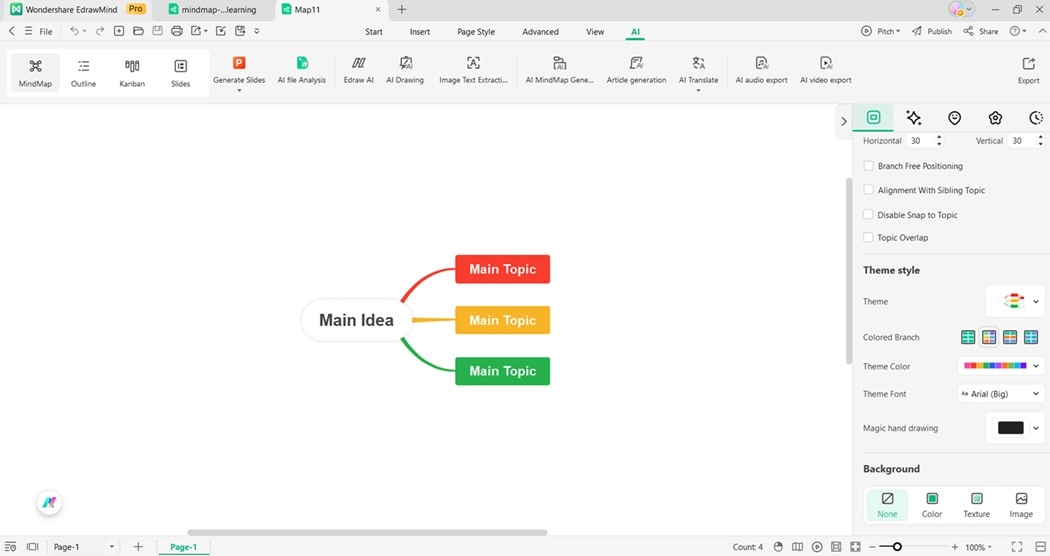
Step 2:
Add branches for sections like Business Goals, Audience, Content Types, Schedule, and Performance. These divisions help organize tasks, maintain focus, and ensure consistency across campaigns.
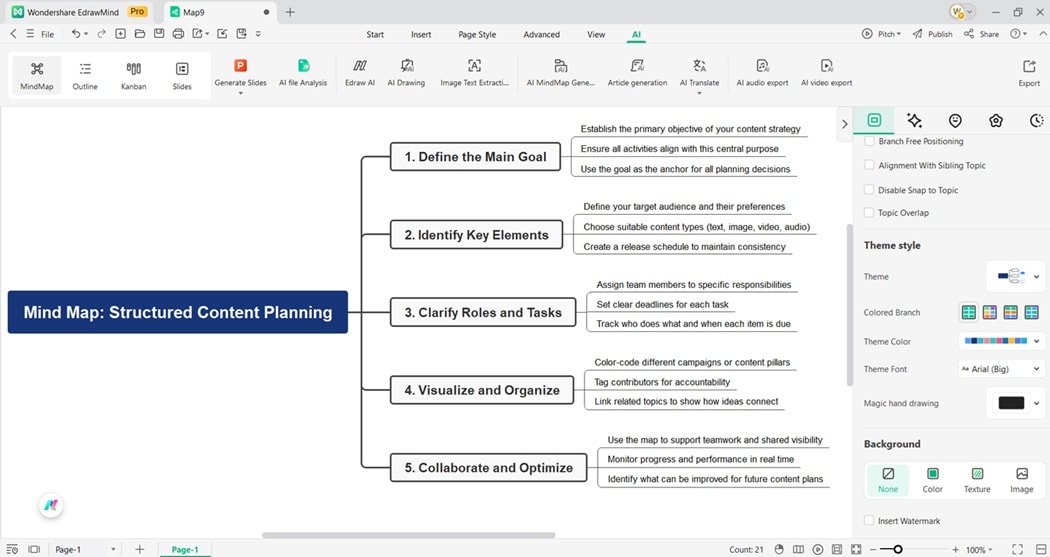
Step 3:
Use colors, icons, and shapes to highlight priorities or task progress. Visual cues make your strategy easier to present and update with your team.
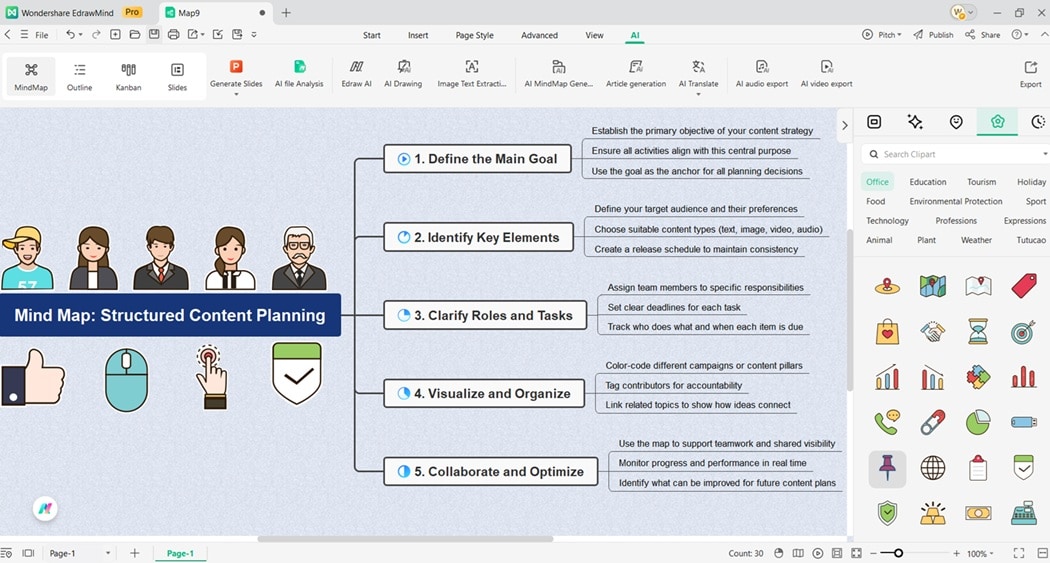
Step 4:
EdrawMind AI can expand your content ideas, refine topics, and create smart structures automatically. This speeds up the brainstorming and planning process while keeping your map detailed and creative.
This mind map shows how to organize a structured and visual content plan.
It begins with defining your main goal and mapping out every key element, such as your target audience, content type, and release schedule. Each part works together to build a smooth workflow.
Every branch helps clarify your plan. It shows who does what, when tasks are due, and how performance will be tracked. You can color-code campaigns, tag contributors, or connect related topics to maintain alignment.
This visual structure also supports collaboration and optimization. As teams track progress and measure outcomes, they can identify improvements faster and refine future content strategies with confidence.



